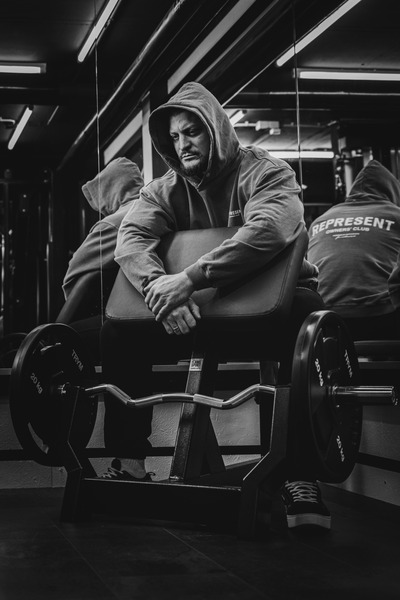Prison gyms serve as vital spaces for inmates to work on their physical fitness and mental well-being. The equipment used within these spaces must be specifically designed to meet a unique set of requirements, ensuring safety, durability, and appropriate usage. Understanding these characteristics can guide institutions in providing beneficial and secure workout environments for their populations.
Durability for Longevity
First and foremost, gym equipment in prisons needs to withstand heavy usage over extended periods. This calls for robust materials that resist wear and tear. Components such as stainless steel, heavy-duty composites, and tamper-resistant designs are key to longevity. It is essential that this equipment can endure constant use without compromising on performance or safety.
Safety Features
The design of gym equipment used in correctional facilities must prioritize inmate safety. Some of the aspects to consider include:
-
Eliminating pinch points to prevent injuries
-
Securing moving parts to guard against unauthorized disassembly or misuse
-
Having stable bases to prevent tipping or unsteadiness during use
These safety measures help reduce the risk of accidents and potential for harm within the prison environment.
Versatility and Space Efficiency
The restricted space in prison gyms necessitates equipment that can serve multiple purposes. Multifunctional machines that allow for a variety of exercises can maximize the utility of limited gym space. Additionally, equipment that can be folded or stacked when not in use can help manage and optimize available areas for physical activity.
Maintenance and Ease of Cleaning
When managing the well-being of inmates, maintaining hygienic conditions in a prison gym is of the utmost importance. Given the high volume of individuals using the space, selecting materials and equipment that can easily be sanitized is critical. Surfaces that allow for swift and effective cleaning minimize the risk of contamination and disease spread.
In a setting where cleanliness is paramount, the ideal materials are those that can withstand rigorous and repeated disinfections. Smooth, non-porous surfaces are preferable as they can be wiped down without the need for excessive scrubbing. These materials help create an environment where proper hygiene can be maintained with relative ease, safeguarding both the health of the inmates and the staff.
Resistance to Vandalism and Unauthorized Use
Equipment in prisons must be built to resist vandalism. Featuring fewer removable parts and using tamper-proof fasteners can help in reducing the chances of equipment being disassembled. Fixed weights, as opposed to free weights, mitigate risks of misappropriation for purposes other than exercise.
In addition to traditional gym equipment, prisons might consider options for outdoor fitness equipment. Such equipment can be adapted for secure installation in outdoor prison yards, providing inmates with fresh air and sunshine during their workouts for enhanced well-being.
User-Friendliness
Functionality without complexity is a key feature of reliable gym equipment in prisons. Systems should be intuitive to use, minimizing the need for extensive instruction or supervision. Quick-start mechanics and simple adjustment options facilitate seamless workouts for inmates with varying levels of fitness experience.
Inclusive Design
Prison populations are diverse, encompassing individuals of different physical abilities and fitness levels. Inclusive equipment design ensures that all inmates have access to physical training. Features that accommodate users of different sizes and abilities are essential in providing a comprehensive and equitable fitness program.
While indoor fitness equipment has its place, there is a growing appreciation for the role of outdoor fitness equipment companies. Facilities like parks within prisons may benefit from robust, weather-resistant equipment that supports exercise in a more natural setting.
Adaptability to Various Fitness Programs
Efficient prison gym equipment should be adaptable to different fitness programs, allowing for both individual and group exercises. Being able to scale up the intensity or modify exercises based on individual fitness plans is crucial in fostering a rehabilitative and dynamic environment.
Cost-Effectiveness
While initial investment in high-quality gym equipment might appear costly, it is cost-effective in the long run. Durable and low-maintenance machines reduce the need for frequent repairs or replacements. Investing in quality equipment translates to long-term savings and decreased operational costs for the correctional institution.
Exploring what could be harnessed from park exercise equipment, institutions can expand their facilities beyond the four walls, integrating the rehabilitative power of physical activity with the restorative experience of the outdoors.
Cultural and Recreational Appropriateness
Lastly, the equipment should align with the cultural norms and recreation policies of the prison. It should promote positive behavior, offering a form of constructive leisure time that can aid in the rehabilitation process.
When selecting gym equipment for correctional facilities, it is imperative to appreciate the aforementioned characteristics to ensure a safe, durable, and functional environment. The right equipment can positively impact the well-being of the prison population, contributing to improved health outcomes and potential reductions in recidivism.
Final Thoughts
Wrapping Up, the selection and provision of gym equipment in prisons is not merely a matter of filling a room with machines. It involves thoughtful consideration of a complex set of requirements that, when properly met, support a vital element of the correctional institution’s mission: to rehabilitate and prepare individuals for a healthier and more productive life, both inside and beyond the prison walls.




